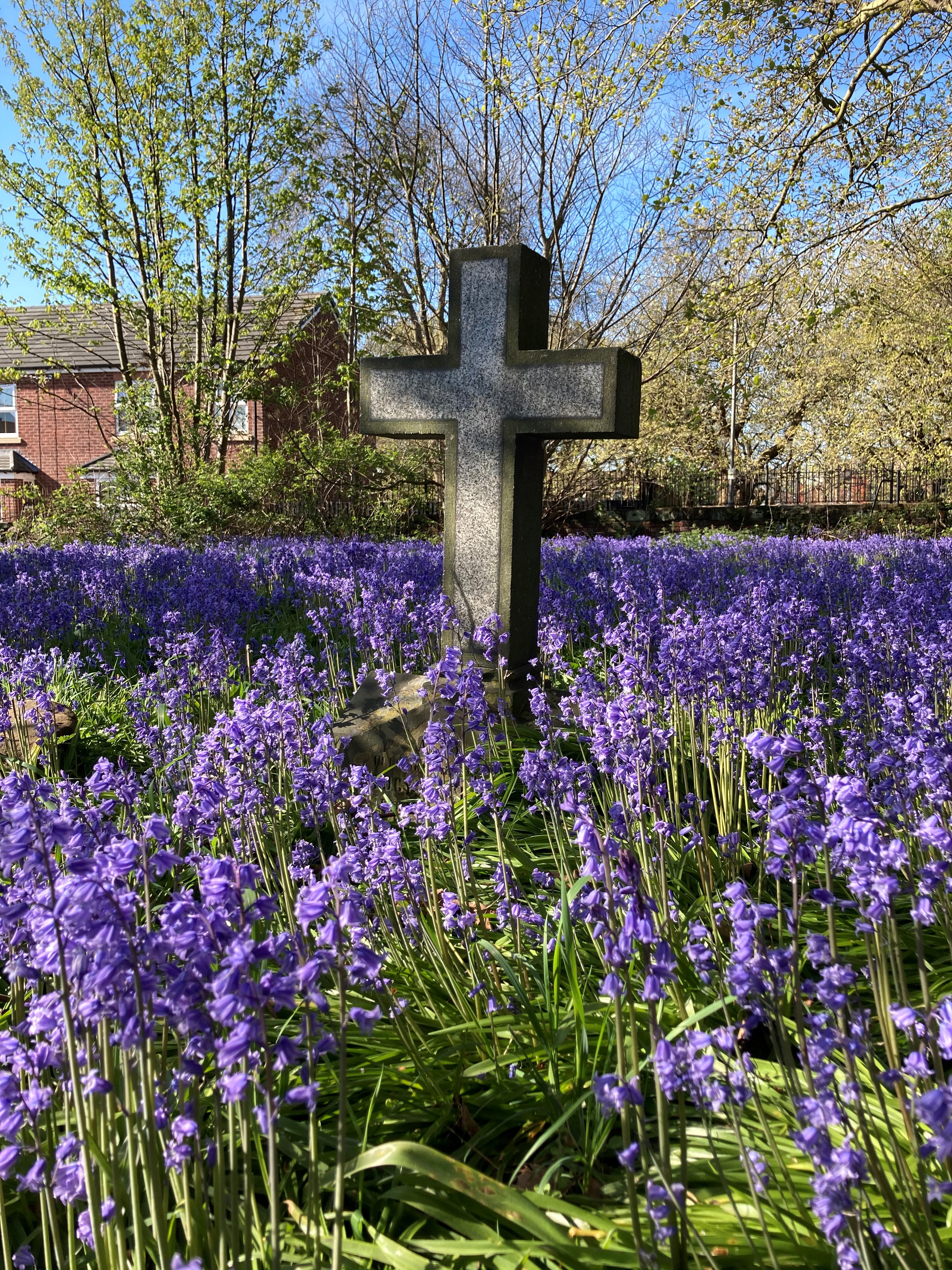The Churchyard
History of the Churchyard
In Norman times the parish of Walton extended from the small fishing port of Liverpool, North to what is now Ainsdale and inland to West Derby. Originally this was the only consecrated burial ground in the area and most burials were in unmarked graves. However, as early as 1361, during the Black Death, the churchyard at St Nicholas in Liverpool was opened. But by 1845 the churchyard was full; although further land was added, the last space was used in 1958. The oldest gravestone commemorates William Fazakerley of Kirkby and is dated 1600. The longest lived was Hannah Wall of West Derby ‘who departed this life on 2 august 1938 at the extraordinary age of 111 years’.
Extensive alterations to the central part of the churchyard were made in 1973 when this area was landscaped.
In the Middle Ages only the very wealthy were buried in graves with permanent memorials – often within the walls of the church itself. Most people were buried in the grounds of the church; usually in a shroud rather than a coffin and with, at most, a wooden marker. Plots were re-used multiple times until permanent gravestones gradually became more common.

The oldest gravestone at St Mary’s is close to the gate at the entrance from Church Flags. It marks the final resting place of William Fazakerley of Kirkby and is dated 1600. By 1845 there were no further burial plots available and the field to the East was bought into use to extend the graveyard. In 1910 the council wished to widen the road to the West of the church to form what is now County Road. Approximately 200 graves were re-located. The longest-lived person commemorated is Hannah Wall of West Derby who departed this life on 2nd August 1938 at the extraordinary age of 111 years. The last available space in the graveyard was used in 1958. Responsibility for the upkeep of the graveyard passed to the City Council in 1966. In 1973 the area outside the front of the church was landscaped and the gravestones refashioned into a paved area. Those stones therefore no longer mark the graves of those they commemorate.
Over recent years the area of the graveyard to the east of the path running between Church Flags and The Old Grammar School has become overgrown and the graves inaccessible and unidentifiable. Recent volunteer work has seen some of the brambles cleared. However, there is much to be done, including the control of an extensive infestation of Japanese knotweed.